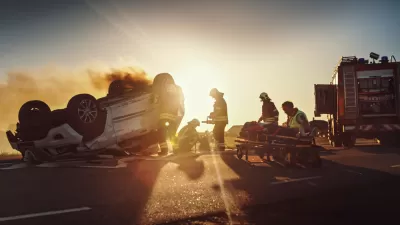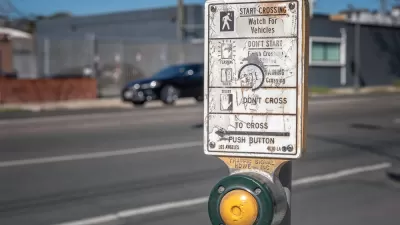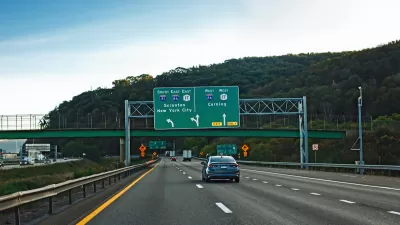Rates of traffic deaths vary widely among racial and economic groups but continue to rise across the board.

Although car crashes might seem like “an equal-opportunity public health problem,” David Leonhardt, writing in the New York Times, highlights the stark inequalities among economic and racial groups as traffic deaths rise sharply across the country.
Although traffic death rates were steadily declining since the 1970s, they started growing again in 2015, partly due to the ubiquity of smartphones and, consequently, distracted driving. “The U.S. has also been less aggressive about cracking down on speeding than Britain and some other parts of Europe, and vehicles here tend to be larger.” Since the pandemic began, road deaths rose even more dramatically.
As to the reasons for the inequity in traffic deaths, Leonhardt writes, “Poorer people are more likely to drive older cars, which can lack safety features. Low-income neighborhoods are also much more likely to have high-speed roads running through them.” And while some Americans were able to work from home during the pandemic, “many blue-collar Americans kept driving, biking or walking to work.”
Whatever the reasons for the growth in crashes, there are many known, simple solutions that safety advocates have touted for decades. As Leonhardt explains, “Those answers include: stricter enforcement of speed limits, seatbelt mandates and drunken-driving laws; better designed roads, especially in poorer neighborhoods; more public transit; and further spread of safety features like automated braking.”
FULL STORY: Race, Class and Traffic Deaths

Maui's Vacation Rental Debate Turns Ugly
Verbal attacks, misinformation campaigns and fistfights plague a high-stakes debate to convert thousands of vacation rentals into long-term housing.

Planetizen Federal Action Tracker
A weekly monitor of how Trump’s orders and actions are impacting planners and planning in America.

San Francisco Suspends Traffic Calming Amidst Record Deaths
Citing “a challenging fiscal landscape,” the city will cease the program on the heels of 42 traffic deaths, including 24 pedestrians.

Defunct Pittsburgh Power Plant to Become Residential Tower
A decommissioned steam heat plant will be redeveloped into almost 100 affordable housing units.

Trump Prompts Restructuring of Transportation Research Board in “Unprecedented Overreach”
The TRB has eliminated more than half of its committees including those focused on climate, equity, and cities.

Amtrak Rolls Out New Orleans to Alabama “Mardi Gras” Train
The new service will operate morning and evening departures between Mobile and New Orleans.
Urban Design for Planners 1: Software Tools
This six-course series explores essential urban design concepts using open source software and equips planners with the tools they need to participate fully in the urban design process.
Planning for Universal Design
Learn the tools for implementing Universal Design in planning regulations.
Heyer Gruel & Associates PA
JM Goldson LLC
Custer County Colorado
City of Camden Redevelopment Agency
City of Astoria
Transportation Research & Education Center (TREC) at Portland State University
Jefferson Parish Government
Camden Redevelopment Agency
City of Claremont





























